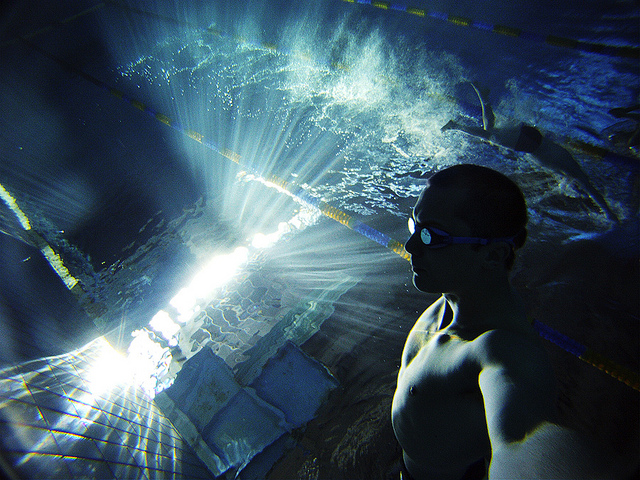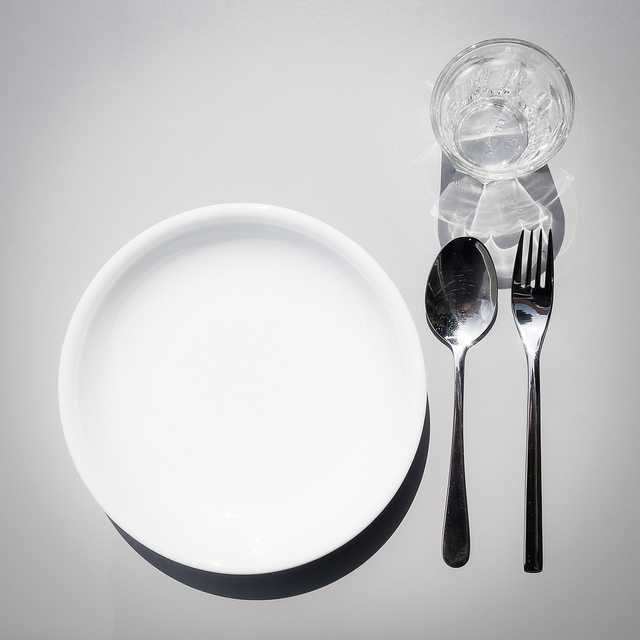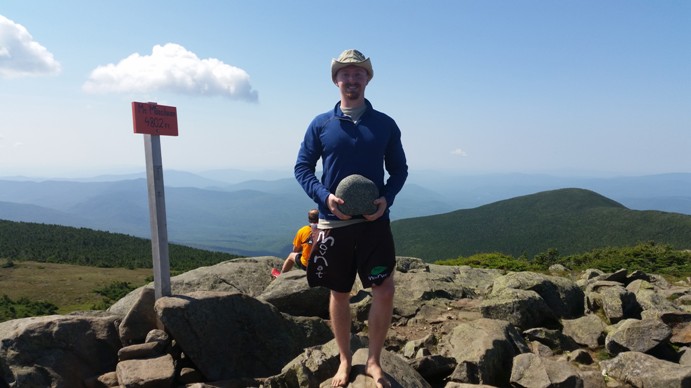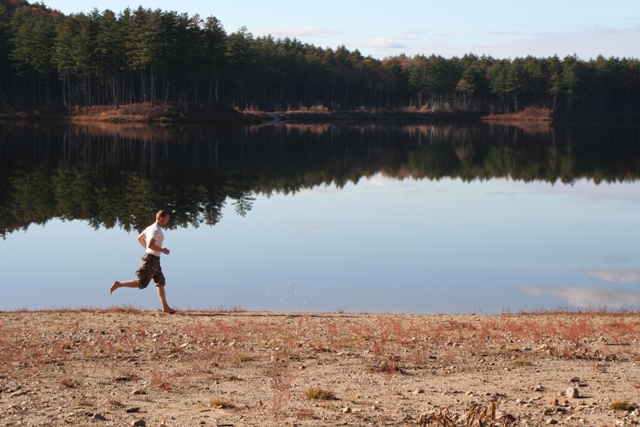How to Use Positive Stress To Get Tougher, Build Hardiness, and Cultivate Grit with Hormetic Training

Science now agrees: what doesn’t kill you makes you stronger.
It’s a little something called hormesis. Here’s what it means…
“Hormesis is a biological phenomenon whereby a beneficial effect (improved health, stress tolerance, growth or longevity) results from exposure to low doses of an agent that is otherwise toxic or lethal when given at higher doses…The philosophy of Hormetism…is based upon harnessing this biological phenomenon in a deliberate and systematic way in order to increase strength and resilience.” – GettingStronger.org
Put simply, stress – at the right dose and under favorable conditions – leads to getting stronger and better able to handle stressors in the future. It’s pretty cool, and one of the amazing things about being human.
So, here are some questions for you to reflect on.
Aww, c’mon John. You mean, I actually have to think instead of having you spoon-feed me information?
Yes, that’s exactly what I mean. Stick with me here.
- How well do you endure difficult conditions or circumstances?
- Would you describe yourself as hardy, rugged, or tough?
- Do you get cold easily?
- How well do you function on an empty stomach?
- Can you walk, run, and otherwise function normally while barefoot? What about outside on natural terrain?
If you don’t like the answers to those questions, maybe some of the following hormetic training strategies would be right for you. The best part is that not only will every one of these activities make you tougher, they also come with a distinct set of health and fitness benefits, too.
Oh, and there’s that little-known fact that people who get good at doing hard things (and enduring hard things) are much more likely to succeed. So, get used to the idea of being a hard person. Get comfortable with being uncomfortable.
As you practice this, you’ll get better at making the hard, right choices instead of the easy, wrong choices. I mean, if you can take a cold shower just because, go without food, and train outdoors barefoot, you’ll possess a rare quality that will help you do anything that you set your mind to.
So, let’s get to work.
5 Hormetic Training Strategies
1. Cold Exposure

There are many physical and mental benefits to be had from gradually and systematically exposing yourself to cold. Cold exposure strengthens your immune system, cardiovascular system, and your tolerance of stress. It boosts your energy, increases your testosterone, helps you sleep better, decreases inflammation, and even improves your fertility. It also makes your skin, hair, and nails healthier and stronger. It can even help with fat loss and depression. Needless to say, we are wired to benefit from the cold.
But the main benefit that I see is psychological. That is, subjecting yourself to uncomfortable levels of cold by choice is a great practice in mental toughness.
Now, the simplest and easiest way to start experimenting with cold exposure is to start taking cold showers. In my opinion, this is one of the most practical and effective ways to improve your toughness, which is why I’ve listed it first on this list. All that it requires is that you’re willing to be cold for a few minutes a day – doing something that you normally do anyways. And by the way, being cold is the only downside.
Begin gradually with a cool shower (or only for the last 15-30 seconds at the end of your shower). You can then gradually decrease the temperature and increase the duration of time you’re using cold water. It really isn’t rocket science.
Here’s how I do it: I take cold showers regularly. Although, not always (e.g. such as before a shave). I’ve also “bathed” in the snow (i.e. in my swimsuit!). I’ve also got a great swimming spot in a very cold river that I like to frequent. But I’m not dogmatic about it. I don’t try to squeeze in a daily 5.25 minute cold shower. I don’t dump a bucket of ice water over my head each morning. I’ve just made an casual habit of it. And that’s good enough for me. Depending on your goals, that may be a good fit for you. Or, maybe you’d like to be more regimented about it. There are certainly plenty of benefits to doing so. So, figure out what works for you.
2. Breath Holding

How long can you last without air?
Apart from the obvious benefit of being able to last longer without oxygen, there are also performance benefits to be had from breath holding, along with the mental toughness that comes from deliberately depriving yourself of oxygen. There are health benefits, too, along with many risks associated with depriving your body (e.g. brain, heart, etc.) of oxygen.
Note: Holding your breath can be very dangerous, and people do die from doing this, which is obviously counter-productive to this kind of training, and your health, in general. So, please train safely. For example, don’t swim to the middle of a lake all by yourself, submerge yourself, and see how long you can hold your breath, without a buddy, or a lifeguard, or a PFD, etc. Be smart.
Most people can dramatically increase their lung capacity and the length of time that they can hold their breath in a short period of time. I’ve heard regular reports of people doubling or tripling their breath hold times in less than a week. Sometimes, within one training session with a coach. Speaking of which, that’s what’s I’d recommend: get a good coach who can teach you the proper technique and monitor your performance – pointing out any issues if and when they arise. Don’t mess around with this one.
Here’s how I do it: I classify breath holding exercise into two categories: context-free and context-rich. Context-free breath holding is when you sit or lay down in a comfortable position and simply hold your breath for as long as you can without blacking out (or seeing the pretty colors). It’s a relatively safe, controlled environment, but I still recommend having someone else present just in case. Context-rich breath holding, on the other hand, is when you’re either holding your breath under water, or trying to complete some other activity without breathing. So, swimming the length of a pool underwater would be an example. And it should go without saying that you should always have another person present whenever your practice context-rich breathing (e.g. have a buddy with you, tell the lifeguard what you’re doing, etc.).
3. Fasting

While I was training in the mountains of West Virginia during a 5-day MovNat retreat, my group was preparing for a 2 hour MovNat fitness challenge (i.e. an obstacle course test that involved running, jumping, climbing, crawling, lifting, and throwing things, among others). It was 2 hours of non-stop physical activity. Kindof like a Maddog Mudder or a Spartan Race, just in the woods – out in the middle of nowhere. It was the “main event” of the week – something that we had been preparing for over the days prior.
The kicker was that we’d be doing this fasted. Our last meal was roughly 16 hours beforehand.
Up until this point, I very rarely fasted – and never for health and/or fitness purposes. Quite the opposite, actually. I usually made it a point to be well-fueled whenever I’d be training hard. And so, I was a little worried that my energy would tank mid-way through this fitness test. But after two hours of running through the woods, climbing ropes, crawling through swamps, and many other grueling activities – when we finally finished the test – I realized that I was just fine. I didn’t need to be well-fed to function at a high level for a couple of hours. And I didn’t feel the need to gorge myself afterwards either. Our group had a light salad to “break” the fast.
This was a turning point for me because I learned that I didn’t need a constant supply of food to keep training and performing at a high level. And I’ve since learned that fasting not only offers many health benefits, it is also a good way to build your mental toughness, too.
As an aside, fasting has also better equipped me to say no to food when I don’t need it.
Here’s how I do it: I fast a meal or two occasionally (e.g. a 16-24 hour fast). And I will also do a 1 or 2 day fast on rare occasions. I have fasted longer than this, and concluded that it wasn’t an effective strategy for health and fitness purposes (at least, for me).
4. Going Barefoot

Many people have told me, “you must have really tough feet.” I guess that’s what happens when you hike barefoot. And while it’s true that my feet have toughened up a bit since I started training barefoot, they’re also more sensitive than ever before.
I’ve found that getting people to go barefoot gets them out of their comfort zone immediately, and confers some mental toughness benefits as a result. And I can guarantee that going barefoot when training (and otherwise living) will make you stronger, more resilient, and more hardy.
Here’s how I do it: I go barefoot whenever it’s safe and practical, which means that, for the most part, I’m barefoot whenever it’s not too cold or socially unacceptable. That means I’m barefoot around the house, when I’m training, doing yard work, when visiting with friends and family, etc. When I do wear shoes it’s because I’m out “in public” or attending a special occasion, or because I need them to protect my feet. So, I am not anti-shoe so much as I’m pro-feet!
Note: I’ve got a lot of information on this site about going barefoot.
5. Training Outdoors

You can take advantage of hormesis any time that you go outdoors – whether you’re out in the jungle or in the urban jungle.
That sunlight out there causes stress. So does the air temperature and humidity. So does terrain. And germs. It all offers a unique way to get stronger, more resilient, and yes, mentally tougher.
The easiest way to get started is to simply start doing some of the things you normally do indoors, outdoors. So, if you do calisthenics in your living room, do some on your porch. If you walk or run on a treadmill, start walking and running outside. And of course, you could also make specific time to enjoy the great outdoors. The key is that you simply get out there.
And hey, you should seriously do yourself a favor and make time to enjoy nature regardless of the hormetic benefits. It’ll do you a lot of good. Nobody goes outside because they want to benefit from hormesis. They go outside because they enjoy it. And that’s how it should be.
Here’s how I do it: I do some of my physical training outdoors, year round (often in the cold, while fasted, and barefoot). Yes, even in our cold New England winters. I go walking, running, and hiking regularly. I do MovNat in my yard and in local parks. More than anything else, I make it a point to spend as much time outdoors as is possible and practicable. It’s simply a way of life for me. I can’t imagine it any other way.
Final Words
So, which one of these activities perked your interest? Which one are you going to pursue? Which one scares you a little bit?
Well, get off your computer/phone and go do that – even if it’s hard. Because it’s hard. And because you’ll be better for it.
If you found this article helpful, please share it with your friends:
.jpg)
![]()
Health-First Fitness Coach
P.S. If you liked this post, then please signup for the newsletter, or follow me on Facebook or Twitter for daily updates and other interesting info.
Hi John, I enjoyed your latest blog. Before you make a final decision on fasting, please read a book called “Bulletproof” by David Asprey. Without even trying by following his suggestions, I lost over twenty pounds without even trying, feel stronger and much more focused, and believe that I am allowing my brain to function better and self detox by intermittent fasting. Don Byk
Glad to hear it, Don! I will check out that book.
Gem..
Thanks John.
*thumbs up*
The cold showers will take some getting used to but worth a try. Cryogenics is a sub for cold as well! Thought about trying it!
I swore after some intense winter military training that I’d never be that cold (voluntarily) again. From the list above, cold is definitely my weakness (but I’ll give the cold showers a try). I live in Mississippi. We have a heat index of 105 today and I love every minute of it. On that note, what are your thoughts on “heat exposure”? I’ll go outside some days just to get hot and sweat. Mainly because I race in the heat and I want to be use to it on race day. It can be extremely uncomfortable but as long as you’re hydrated and you take appropriate care not to get sunburned, it’s safe. And I think it definitely makes you tougher. Just a thought.
Hey Scott,
Heat is another environmental factor that can and should be adapted to (if your environment and training warrants it). And assuming you take the necessary precautions like the ones you’ve mentioned, it’s a relatively safe way to get tougher.
Suggestion: start taking your cold showers shortly after you’ve been out in the heat. It doesn’t get much more pleasant than that.
And hey, after your military training, a cold shower should be a breeze :-)
Great ideas, well presented. On fasting, at an earlier stage of my life I fasted every Monday, as part of a weight loss process, of my own design. It worked well, felt good. I also am a great fan of running/walking in nature. I look for hills, if the path is up, I run , if it is down, I walk and enjoy the sounds sights and smells. I have always finished my shower with a cold blast. Makes a difference to how I feel, and warms me up. I am 70 yrs old and focusing on encouraging the baby boomers to get fit not fat.
Thanks, Graham!